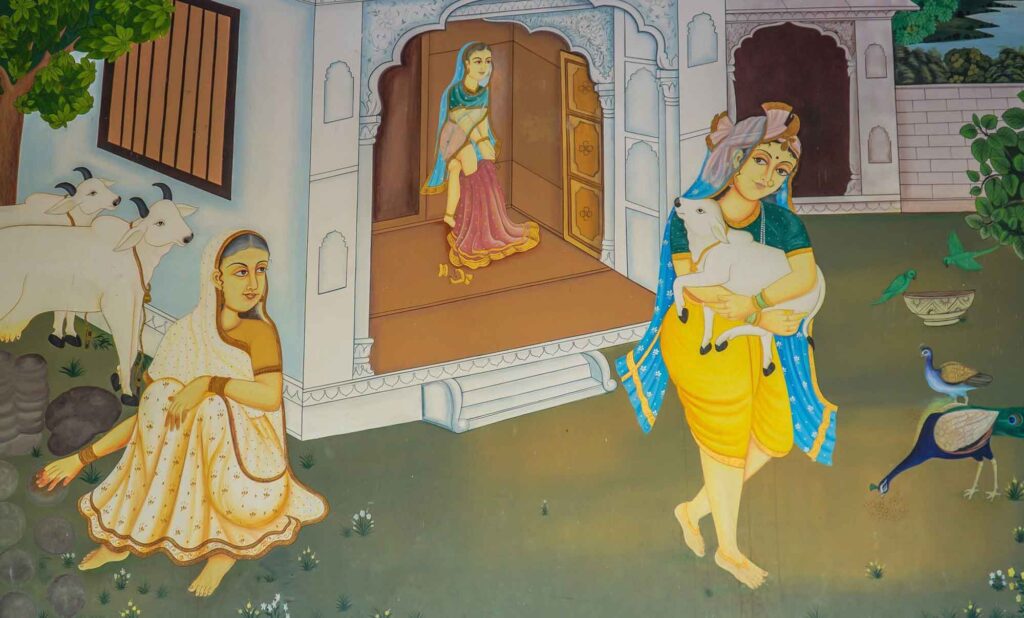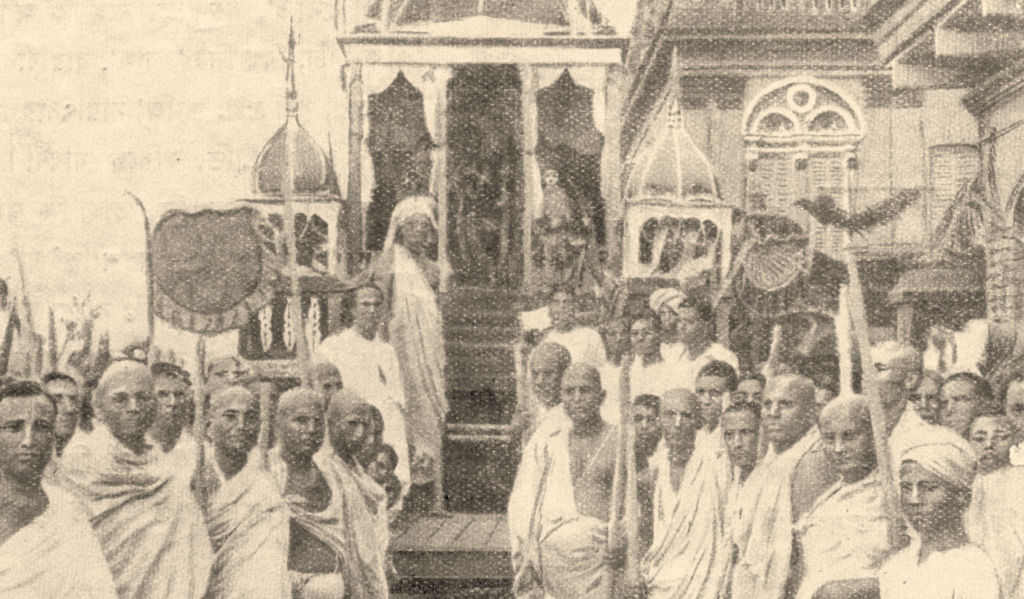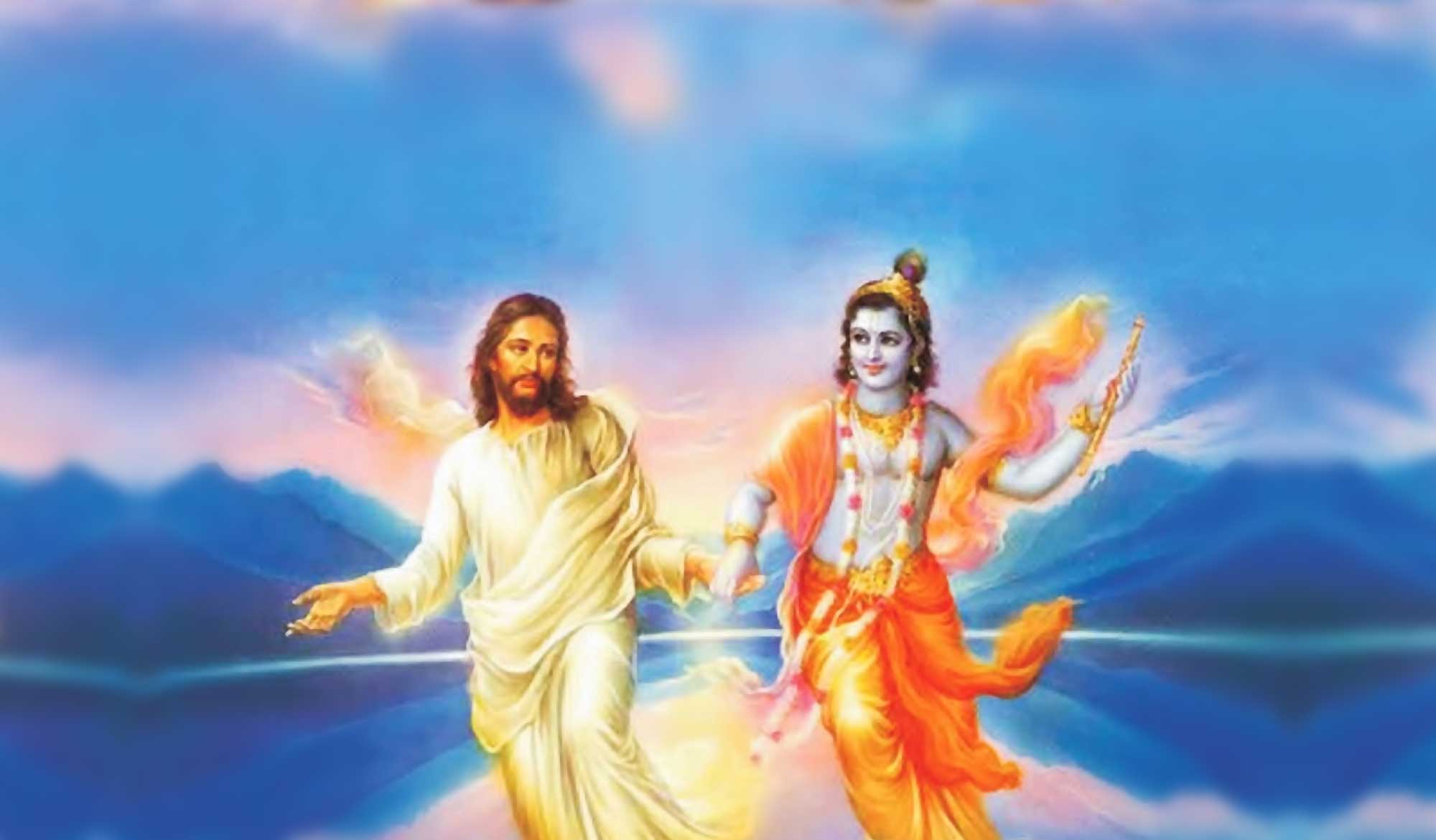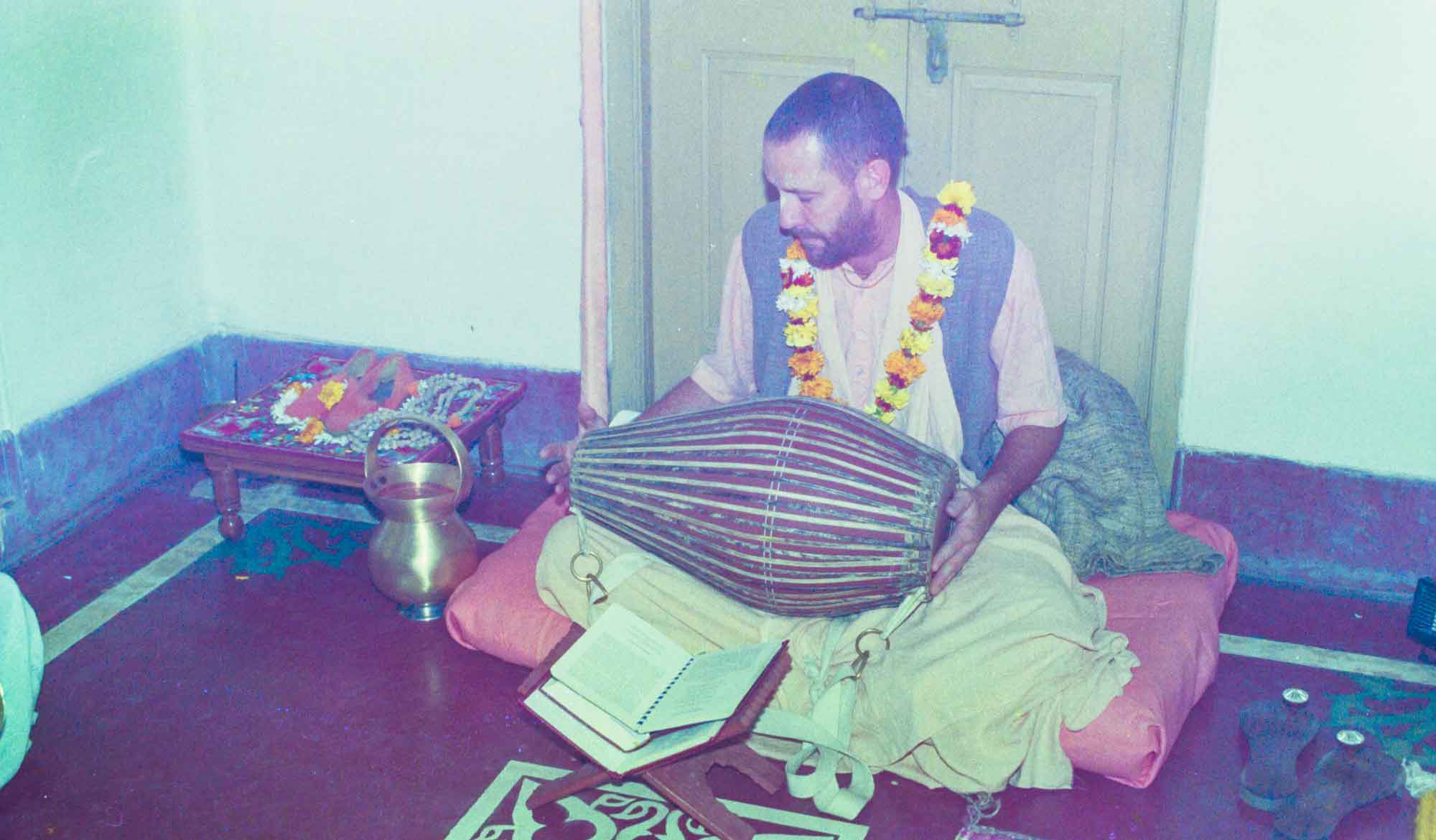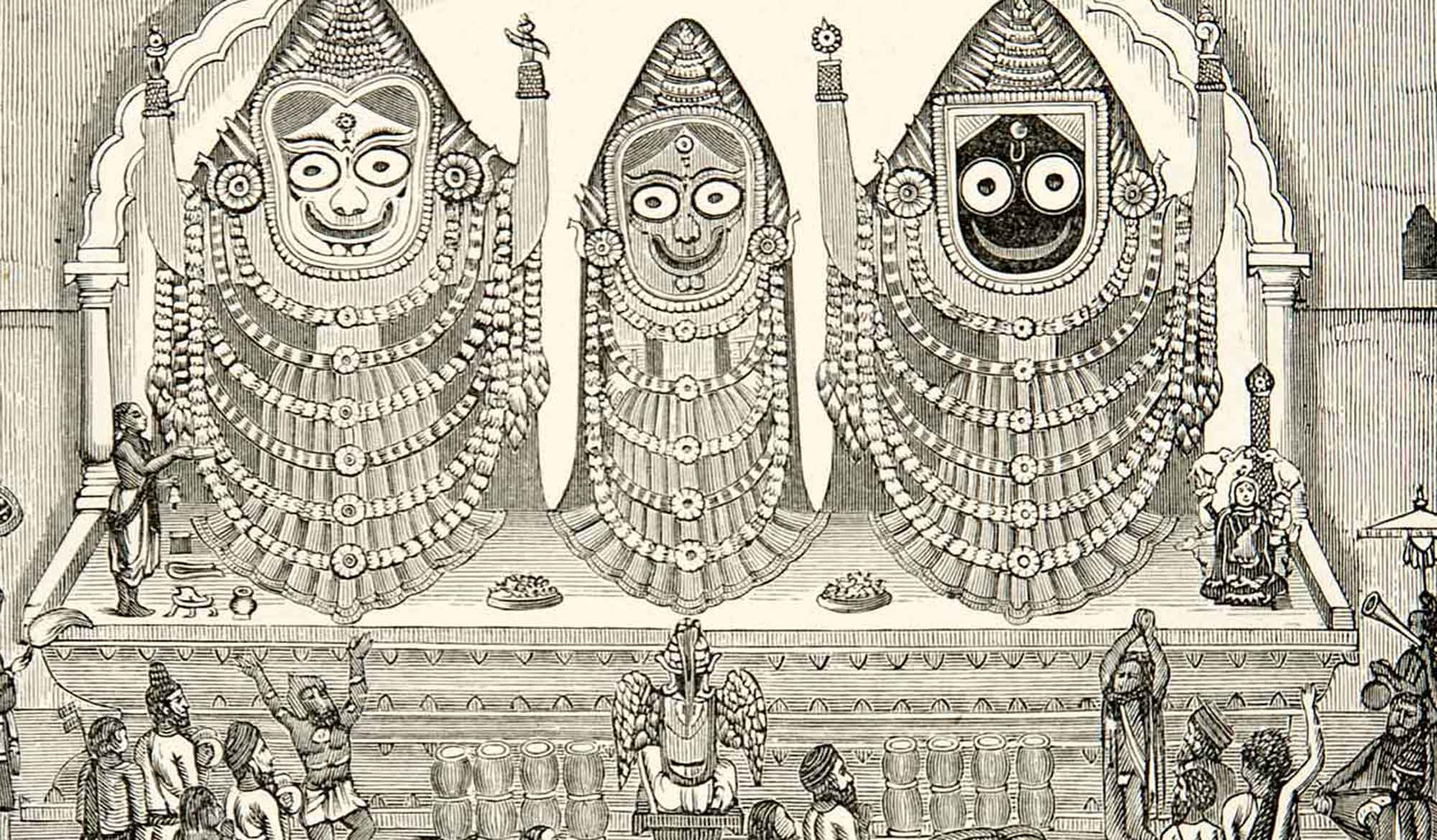by Swami B.G. Narasingha
Rāgānuga Bhakti: Can Spiritual Spontaneity Be Taught? Can It Be Learned was written by Swami B.G. Narasingha in 1998. This article is in response to a question concerning Śrīla Prabhupāda - did he only teach the ABCs? Swami Narasingha responds with a detailed explanation on vidhi and rāga bhakti.
Question: I have heard people say that your guru, Śrīla A.C. Bhaktivedānta Swami Prabhupāda, taught his disciples vaidhi-bhakti, the path based on scriptural injunctions, and not rāgānuga-bhakti, the path of spontaneous love of God. Is that true?
Answer: No. That is a misunderstanding. Śrīla Prabhupāda taught the path of spontaneous love (rāga-mārga) in a way that, one is assured of success. He followed in the footsteps of Rūpa Gosvāmī, Sanātana Gosvāmī, and Ragunātha Dāsa Gosvāmī. Vaidhi-bhakti is of a lower order. Vaidhi-bhakti is devotion arising out of a sense of obligation to the rules and regulations (vidhi) of the Vedic scriptures. The fullest expression of vaidhi-bhakti is found in Vaikuṇṭha, the spiritual domain where awe and reverence pervade one’s relationship with divinity. Rāgānuga-sādhana, on the other hand, directs us to the devotees of Vṛndāvana, the spiritual realm where one’s devotional inclinations are non-calculative, spontaneous, and overflowing with affection.
Śrī Caitanya chose Rūpa Gosvāmī as the most fit person to distribute the rāga-mārga. He explains rāgānuga-sādhana-bhakti in his Bhakti-rasāmṛta-sindhu, which Śrīla Prabhupāda gave us in a summary study, the Nectar of Devotion. The two divisions of sādhana-bhakti, vaidhi and rāgānuga, are the means by which one attains love of Godhead. Bhaktivinoda Ṭhākura explains in his Śrī Caitanya-Śikṣāmṛta that vidhi, regulation that forms the basis of vaidhi-bhakti, is not contrary to rāga (spontaneity). Pure vidhi is helpful to rāga, and pure rāga is a result of vidhi that is in harmony with the will of God. Vidhi helps us cure diseased rāga (spontaneous attachment to that which is not Godly), and when rāga is healthy (centred on Godhead), vidhi retreats. Vidhi and rāga are in one sense separate while simultaneously inseparable, in that they are complimentary components of the same substance – sādhana-bhakti. The relationship between vidhi and rāga in sādhana is like the relationship between medicine and the body. When the body is sick, it needs medicine. When the body is healthy, medicine is needed only for preventive care. In the development of spontaneous love, vidhi is compulsory. In rāga-mārga there may be some relaxing of vidhi – and this was characteristic of Śrīla Prabhupāda’s movement. Śaraṇāgati and aṣṭa-kālīya-līlā, full surrender and 24-hour engagement in the service of Rādhā-Kṛṣṇa, were the sum and substance of all that Śrīla Prabhupāda spoke of and every action he performed.
We Cannot Jump Into Vrndavana
Pseudo-devotees want to jump to spontaneous love without first transcending the material body and mind. They misinterpret Rūpa Gosvāmī when he says that the neophyte should follow in the footsteps of the eternal residents of Vṛndāvana while in the body of a practitioner (sādhaka-deha). In order to follow in the footsteps of the gopīs (Kṛṣṇa’s milk-maids) one must first transcend the bodily conception of life through adherence to vidhi. Before doing so, the neophyte should follow the example of the Gosvāmīs, who are eternal residents of Vṛndāvana appearing on Earth to instruct us by their example.
In Vṛndāvana many Western devotees think that rāgānuga-bhakti consists of bhajana (solitary worship), as opposed to preaching, or at least not to go out of one’s way such that one’s bhajana might be disturbed. This is a mistaken conception. We can understand everything correctly from the example of Śrī Caitanya’s līlā (pastimes). Caitanya-līlā is audārya-līlā, the distribution of spontaneous love of God. This audārya is the result of the most advanced stage of love of God, mahā-bhāva. Tasting the mellows of ecstatic love for Kṛṣṇa in the mood of Śrīmatī-Rādhārāṇī, Śrī Caitanya becomes like a madman and wishes to distribute that love in all directions. In other words, rāgānuga-bhakti is not exclusive of preaching; it is where realised preaching begins.
It was in the divine flow of tasting the drops of nectar that fell from the lotus feet of Śrī Caitanya that Śrīla Prabhupāda carried on his campaign of distributing love of Kṛṣṇa all over the world. In fact, his program of engaging everyone in spontaneous devotion was so dynamic that his rule of thumb was “Kṛṣṇa consciousness now – rules and regulations later.” As enunciated by Rūpa Gosvāmī:
yena tena prakāreṇa manaḥ kṛṣṇe niveśayet
sarve vidhi-niṣedhā syur etayor eva kiṅkarāḥ
“An ācārya should devise a means by which people may somehow or other come to Kṛṣṇa consciousness. All rules and regulations are subordinate to this principle.” (Bhakti-rasāmṛta-sindhu.1.2.4)
Due to Śrīla Prabhupāda’s lack of concern about some points of regulation, less advanced Vaiṣṇavas sometimes criticise him. For example, in the beginning of ISKCON, Śrīla Prabhupāda’s sannyāsa disciples carried tridaṇḍa staffs that were at least a foot taller than they were. In Māyāpura, a person complained, “Their daṇḍas are too big!” The regulation for the staff is that it should be the same height as the sannyāsī, but this detail was being overlooked. When Śrīla Prabhupāda heard of this criticism he laughed and said, “That is because we are big preachers.”
A Thousand Times Worse Than Hell
It is true, however, that in the days of Śrīla Prabhupāda his disciples could not always catch the deepest meaning of everything. Śrīla Prabhupāda was very cautious about discussing certain confidential areas of kṛṣṇa-līlā, specifically mādhurya-rasa (the Lord’s intimate conjugal affairs). Although they are the subject of mature contemplation in advanced stages of rāgānuga-sadhana, he cautioned us not to “rush in where angels dare to tread.” His caution was to save us from becoming sahajiyā’s (imitative pseudo-devotees who think they can enter the pastimes of Kṛṣṇa with their materially contaminated minds), which is a fate a thousand times worse than hell. It is incorrect to think that he did not give us the path of rāgānuga, or that he did not want his disciples to discuss and contemplate higher things in due course. We must find the balance between necessary caution in approaching the highest conception of bhakti and the necessity for progress beyond the primary stage.
There is another reason for Śrīla Prabhupāda not speaking at length or in great detail about certain subjects, such as rādhā-dāsyam, the divine service of Śrīmatī Rādhārāṇī (Kṛṣṇa’s eternal consort). The reason is similar to why Sukadeva Gosvāmī has not directly mentioned the name of Rādhārāṇī in Śrīmad Bhāgavatam. Jīva Gosvāmī points out that if Śukadeva spoke the name of Rādhārāṇī directly, he would have entered āviṣṭa-citta, a state of trance, and become inert for six months. Thus Parīkṣit Mahārāja, who was destined to die in seven days, would not have been able to hear the Bhāgavatam. Similarly, Śrīla Bhaktisiddhānta Sarasvatī Ṭhākura, while speaking about Śrīmatī Rādhārāṇī in a public place, lost his external consciousness and fell from the chair in which he was sitting. Such was his deep devotion for Śrīmatī Rādhārāṇī. Had Śrīla Prabhupāda entered into discussions of the intimate love affairs of Rādhā and Kṛṣṇa and their confidential associates, he clearly would not have been able to carry on his worldwide preaching activities. Therefore, for the benefit of the world, he checked his deeper interests and emotions so he could stay in connection with us.
By Service We Can Know
In Vṛndāvana many devotees now want to know about all the confidential aspects of mādhurya-rasa. To collect some knowledge and show their learnedness on the subject, they run here and there talking to anyone and everyone, and reading anything and everything. After that, some want to produce literature about rasa. This is a faulty process. The mādhurya-līlā is most confidential. By acquiring only categorical knowledge of the subject, one does not enter that realm of consciousness. One can only know the super-subjective plane of intimate līlās of Rādhā-Kṛṣṇa by submissive inquiry and service to the lotus feet of one who is connected with that realm. The confidential līlās of Kṛṣṇa are never knowable by the primary students of Kṛṣṇa consciousness. The proof that we have no standing there, even after researching so much knowledge, is that we utter the name of Rādhārāṇī and her confidential friends, but we remain absorbed in kanaka, kāmimī and pratiṣṭhā: money, sex, and name and fame. The fact that we talk about the confidential pastimes of Rādhā-Kṛṣṇa and remain conscious is proof that we have no real devotion. Śrī Caitanya used to say that the proof of his not having any love for Kṛṣṇa was the fact that he did not die immediately out of separation.
Rāgānuga Bhakti
Śrīla Prabhupāda has made a most significant contribution to the world in the line of rāgānuga-bhakti. Unfortunately, some of his disciples have not understood this contribution maturely. This has caused some senior members of the Vaiṣṇava community in India to think that Śrīla Prabhupāda may have given his disciples only the ABC’s of Kṛṣṇa consciousness. Due to offences to the holy name and to devotees, some of my godbrothers have lost sight of the path of pure devotion. Others, captured by the grandeur and glamour of a big society, have divorced themselves from the inner spirit of spontaneous devotion, which originally attracted them to Śrīla Prabhupāda’s movement. All of this is unfortunate.
When the sun sets, darkness follows. Similarly, after the disappearance of Śrīla Prabhupāda, maya again overcame many of his disciples. In the presence of the spiritual master, we find our way in Kṛṣṇa consciousness more easily due to his illuminating presence. But after his departure from this world we are put to the test. Māyā will try to cover our faith and impede our progress.
The sudden departure of Śrīla Prabhupāda from our midst created a great need in the hearts of his sincere disciples. Just to increase our attachment, Kṛṣṇa called the very life of our life back to his eternal abode. Our spiritual master had returned to the supreme realm of Goloka Vṛndāvana to engage in eternal līlā, but the direction in which he was leading us somehow became unclear for many. Many were lost and others prayed earnestly for help from above. Kṛṣṇa fulfilled their prayers and met the necessity in the hour of their greatest need by manifesting again in the form of Śrīla Bhakti Rakṣaka Śrīdhara Deva Gosvāmī.
We are very much grateful for and indebted to Śrīla Śrīdhara Mahārāja, our śikṣā-guru, who out of his infinite mercy and kindness saw the need of Śrīla Prabhupāda’s disciples. Taking us by the hand, he has shown us, from another angle of vision in the same lineage, the full-fledged glory of Kṛṣṇa consciousness.
By the grace of these two renowned agents of Kṛṣṇa, Śrīla Prabhupāda and Śrīla Śrīdhara Mahārāja, we have obtained a clear picture of rāgānuga-bhakti and are moving forward on the path. That is our good fortune.
More Articles by Swami B.G. Narasingha
The Aquarian Gospel of Jesus Christ
The article, “The Aquarian Gospel of Jesus Christ” was written by Śrīla Narasiṅgha Mahārāja under the pseudonym of ‘Pradeep Sharma’ in 2007. This article was in response to various parties begging the question about Jesus being a devotee of Kṛṣṇa and citing a dubious work called the ‘Aquarian Gospel’ as evidence.
Meditation Techniques and the Holy Name
'Meditation Techniques and the Holy Name' was written by Swami Narasingha in October 2006. Narasingha Maharaja discusses the age-old problem of distraction during japa, and gives advice based upon Sanātana Gosvāmī and Bhaktivinoda Ṭhākura on how to combat this.
The Burning Cross – Part 2
In ‘The Burning Cross - Part 2’, Śrīla Narasiṅgha Mahārāja, under the pen name of Pradeep Sharma, discusses the Goan Inquisition, how the Christians viewed Lord Jagannātha in Purī, and the thoughts of the Founding Fathers of the Unites States about Christianity.

